NASA announced that the spacecraft, which will come closer to the Sun than any other spacecraft, will be named after Eugene Parker, the astrophysicist who predicted the phenomenon of the solar wind.
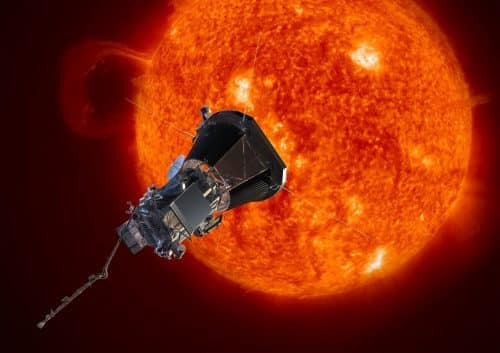
The American space agency announced yesterday that its next research spacecraft to the sun, Solar Probe Plus ("the solar probe plus"), will now feature the "Parker solar probe", named after the astrophysicist Eugene Parker, who predicted the existence of the solar wind, a phenomenon of the flow of particles emitted from the sun towards outer space at an enormous speed of about 500 km per second.
The spacecraft, which will be launched between July and August 2018, will come closer to the Sun than any other spacecraft ever. In a complicated and lengthy orbit that includes seven flybys near the planet Venus, the Parker Solar Probe will slowly reduce its orbit and get closer and closer to the Sun (see below regarding the unique orbit).
At the end of the mission, between 2024 and 2025, the spacecraft will reach the closest point in its orbit to a distance of about 6 million kilometers from the Sun - 0.04 of the average distance of the Earth from the Sun (known as an "astronomical unit", about 150 million kilometers). This distance is about 7 times closer to the sun than the distance of the current record holder, the spacecraft Helios 2, which was launched into the vicinity of the Sun in 1976.
At a peak speed of about 700,000 km/h, which it will reach when it gets very close to the sun, the probe will turn to the fastest bone man made At that speed, you can get from Washington DC to Philadelphia in one second.
Watch a NASA video showing the mission:
The first spacecraft to be named after a living researcher
at the ceremony held yesterday At the University of Chicago, NASA gave the elderly researcher Eugene Parker, who will turn 90 next month, the greatest honor - it will name one of its most expensive missions after him, which is estimated to cost about 1.5 billion dollars.
NASA often names its missions after famous researchers, such as the Hubble Space Telescope, named after astronomer Edwin Hubble, but this is the first time the agency has named a spacecraft after a living person.
Parker said at the conference that he "feels very honored to be associated with such a heroic space exploration mission." In a NASA announcement, he added that "the solar probe is going to an area of space that has never been explored before. We want to get more accurate measurements of what is happening in the solar wind. I'm sure there will be surprises. They are always there."
"The Parker Solar Probe is going to answer questions in solar physics that we have been waiting for for more than six decades," said Nicola Fox, the chief scientist of the mission, from the Applied Physics Laboratory at Johns Hopkins University, in the state of Maryland in the United States. "The spacecraft is equipped with a lot of breakthroughs that will solve many mysteries about our planet, including the discovery of the reason why the Sun's corona is so hot compared to the surface. We are also very proud that we will be able to carry the name of Gene [Eugene Parker] with us on this amazing research journey."
Watch Eugene Parker talk about his research:
Parker was highly respected for his research predicting the phenomenon of the solar wind, which he published when he was only 30 years old. It should be noted that even earlier researchers hypothesized the existence of matter emitted from the sun, among other things due to the fact that the tails of comets always turned in the opposite direction to the sun. Parker, however, was the first to describe in detail how the phenomenon is caused in the solar corona region, the upper layer of the star's atmosphere, even before the solar wind was directly observed.
His research was initially received with skepticism. The article he submitted In 1958 the Astrophysical Journal was rejected by peer review, but eventually published Thanks The assistance of the Nobel Prize-winning astrophysicist (in 1983) Subrahmanyan Chandrasekhar, who was the editor of the magazine at the time.
The solar wind phenomenon was observed for the first time one year later, in measurements made by the Soviet spacecraft Luna 1 in 1959. The measurements were later verified by the American spacecraft as well Mariner 2, launched in 1962.
Understand how the solar wind is formed
The solar wind is generated in the machine area molding ("Corona") - the upper layer of the Sun's atmosphere, around the front of its visible "surface" (if you can call it that the outer part of a giant ball of gas and plasma that lacks a solid surface).
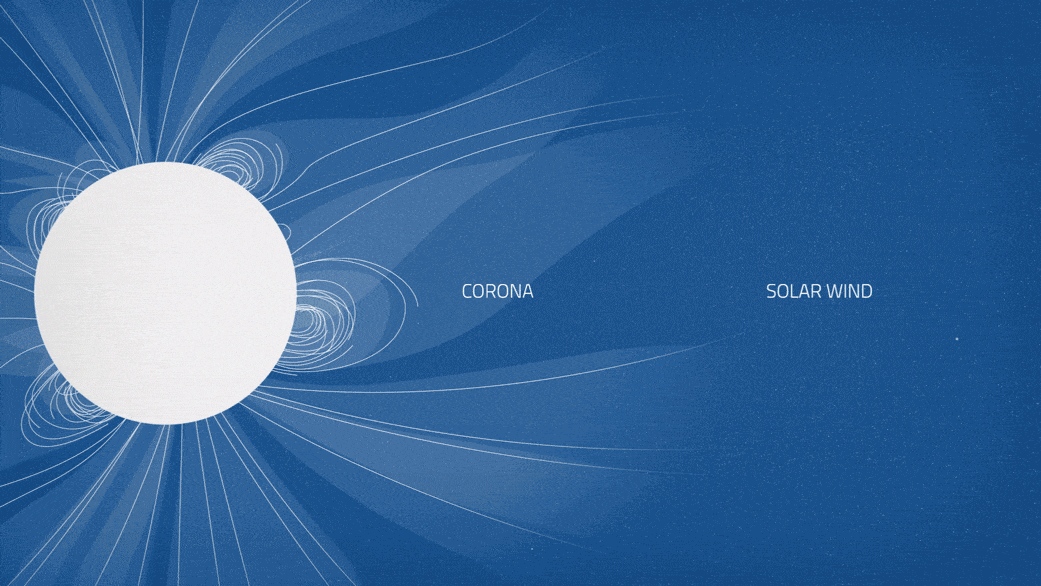
The particles are ejected from the crown thanks to its enormous temperature, which can even reach 3 million degrees Celsius. The corona is much hotter than the surface of the sun, which "only" reaches about 5,800 degrees Celsius. However, the Sun's surface is much denser than the corona, and emits much more light than it, so it can only be seen with the naked eye during solar eclipses.
The high temperature in the corona region brings the particles in it to supersonic speed, and many of them reach the speed of escape from the Sun's gravity, and spread everywhere into outer space.
The solar wind has a significant effect on all the bodies in the solar system. For example, researchers Appreciate Mars has a very thin atmosphere because the solar wind collided with it and slowly and gradually, over billions of years, caused molecules to escape from it towards space (unlike Mars, the Earth has a strong magnetic field that protects it from the solar wind).
The reason for the high temperature in the areola is not yet clear and is subject to scientific controversy. Therefore, NASA is interested in sending a spacecraft very close to the sun, so that it can pass inside the corona itself and study the processes that take place inside it.
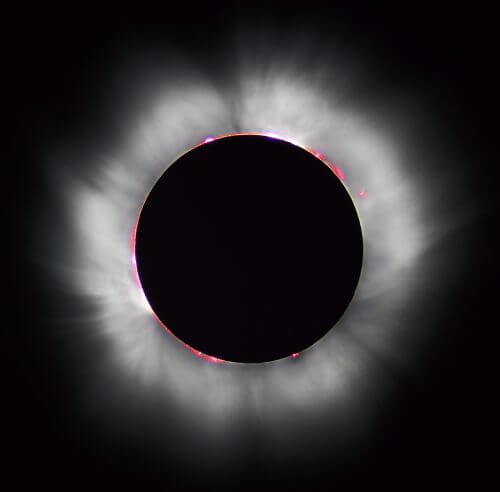
NASA emphasizes that the purpose of the mission is not just pure scientific research, and that it has practical importance in predicting "space weather". to the wind of the sun, and other phenomena like solar flares, has a great influence on satellites and other electronic systems, which we have become dependent on in the modern age.
The modern technology that allows us to touch the sun
In order to complete its mission objectives, the spacecraft is required, in the language of the mission engineers, to reach a distance of less than 10 solar radii (RS) from the center of the sun - a distance of about 6 million km from the face of the sun.
At such a distance, the spacecraft will enter right into the Sun's corona and reach a region where the particles, which eventually become the solar wind, have not yet reached supersonic speed. The spacecraft will, therefore, be able to closely observe the process in which they are accelerated to escape velocity from the sun.
But at a distance so close to the Sun, the temperature the spacecraft will have to endure will reach almost 1,400 degrees Celsius. Although such a mission has been considered a major scientific goal for decades, only in the modern era has it become possible, thanks to the innovative technology that protects the spacecraft.
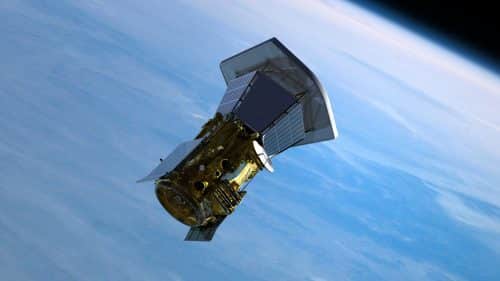
To hide from the burning radiation of the sun, the spacecraft will be equipped with a shield made of composite carbon material, 11.4 centimeters thick. The sun shield will have to survive not only a very high temperature, but also extreme temperature changes that the spacecraft will experience during its elliptical orbit around the sun, in which it approaches but also moves away from the sun.
The spacecraft will have main solar panels, which will be used when it will be far from the sun. To prevent them from overheating near the sun, they will stick to the central body, which is shaded by the sun shield, while their two ends will stick out like fingers, and will provide it with the electricity required for its operation. The solar panels will also be actively cooled using radiators, which will remove the heat generated by the intense sunlight.
The long and tiring journey towards the sun
Another problem faced by the mission planners, which NASA began to develop almost a decade ago in 2008, was the complicated journey towards the Sun.
Unlike spacecraft that are launched away from the sun, the change in speed required in the opposite direction, towards the sun, is much higher and more difficult (See a nice explanation in this video).
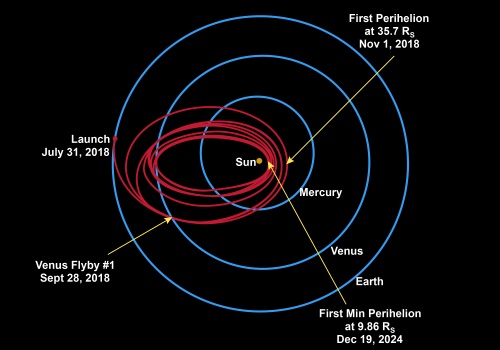
To do this, the spacecraft will assist in 7 flybys near the planet Venus. These flies, which use the method known as "Gravitational plexus", are often done in order to "steal" a bit of the orbital speed of planets and accelerate the speed of the spacecraft (due to the huge mass difference between the spacecraft and the planet, this is a negligible change for the planet). In this case, the opposite will happen - the spacecraft will give Venus a little of its speed, thus slowing itself down and approaching the Sun.
The spacecraft's first flyby near Venus will take place a few months after the launch in 2018, andAlready that year It will reach the closest ever distance of a spacecraft from the Sun - only 0.16 astronomical units (the average distance of the Earth from the Sun).
With each additional flyby you make near Venus, it will reduce its orbit around the sun a little more (or more precisely - just the point ofperihelion, the closest point to the sun in the elliptical orbit, while the ephelion, the farthest point, will remain near the orbit of Venus).
In 2024, the spacecraft will reach the main "action" of the mission - it will begin three final laps in which it will approach the closest point ever to the sun - a distance of about 6 million kilometers from the surface of the sun.
Using four scientific instruments that will be installed in it, the spacecraft will measure and sample the particles inside the solar corona, and take a close-up photo. The researchers hope to understand why the corona is so hot; how is the solar wind created; and how to better predict the sun's activity - to protect electronic systems and satellites, which we have become dependent on in the modern era.

12 תגובות
Shmulik
I know 🙂 It's very surprising, but you can fall into a black hole and not feel any strength. This is of course provided that the field is even, otherwise it will ruin your whole day...
Miracles,
I understand what you mean and you are right of course.
There is a nice experiment you can do:
Take a bottle full of water, puncture it in the bottom in several places and drop it. In free fall the water does not spill out
Shmulik
If the spacecraft is running a powerful engine that causes acceleration, then you will certainly feel the G.
But, if the acceleration is the result of falling in a uniform gravitational field - you won't feel anything.
Miracles,
I did not understand anything:
If I sit in a chair in a spaceship that accelerates at 60 g exactly in the direction of my gaze, I won't feel the chair stick to my back (or break it as it passes through me)?
anonymous
I stand on the ground. Gravity is balanced by force from the ground, so there is no acceleration.
I'm not in free fall. In free fall... falling...
A body in space is accelerated, but does not feel acceleration or G-forces.
I am a great scientist, a new giant, help me
Now, I don't know if you feel the power or not... but it is working on you every moment. The acceleration is inhibited by the ground preventing you from continuing to fall. But this is exactly the point where the forces are balanced. The force that pulls you in and the force that keeps you from falling in. You are constantly accelerating - even when you are floating in space. Each mass pulls another mass in a different direction and when the masses 'arrange' in a certain arrangement (let's say there is some sort of balance between the masses) then the forces equalize between them. You do not agree?
Miracles
You feel a force on your feet because you are in free fall and the ground you are stepping on prevents you from falling into the center of gravity of the earth. Of course - all because of the G-force applied to you.
Yaron
Do you know what the vomit comet is? It's a plane designed to train space crews in weightlessness. The plane gains speed in a dive and then raises the nose high. At this point, he performs a parabolic trajectory, until the nose descends low again. In the parabolic phase the people in the space of the plane are weightless and floating in the air. Trust me - I've done something similar dozens of times.
Now - stand on the floor. standing? Is it true that you feel strength on your feet? So how do you explain that there is force without acceleration?
I know it's not intuitive, but Newton's second law is not as simple as it seems. Acceleration is definitely possible without you feeling any power.
In the laps of the sling is there no centrifugal force acting? So how is it accelerated? According to Newton, in order for there to be acceleration, a force must act.
Yaron
The probe is in free fall and therefore has no G forces on it.
The truth is that there is a G force on it due to tidal forces, but due to the size of the Sun it is negligible.
700,000 km/h is approximately 1543 times less than the speed of light, but 25 times the speed of a modern spacecraft. getting closer It's a speed I can't imagine. 7,000 times faster than 100 km/h in a car. It's an apparent flight in an almost empty space and under the influence of a gravity slingshot. And the acceleration activates G forces that I don't know how to calculate on the probe. In addition, it is not possible to deviate from the orbit if there is an asteroid. I don't know the probability of an asteroid in orbit.